Dancing with Myself When the Body Becomes a River - Interview Review with Zoe Zheng Yuchian
Article Source
:LOHAS Magazine May 2020 Issue
Editor Text / Bingxin Design / Wang Rui Images / Provided by Interviewee
Special Thanks/ broadcast (as a partner of the 3rd Shanghai Improvisation Festival) for providing image assistance
Only the rising and falling of breath, the music seemed to have texture with the light and shadow, and the large room was very quiet. People were lying on the ground or posing, and some mediums in the space seemed to be undergoing subtle changes. This was something that Zheng Yuchian (Zoe) had not realized before, a kind of dance that can give people such a strong feeling - like water flowing through the body, reaching the dark places in people's hearts.
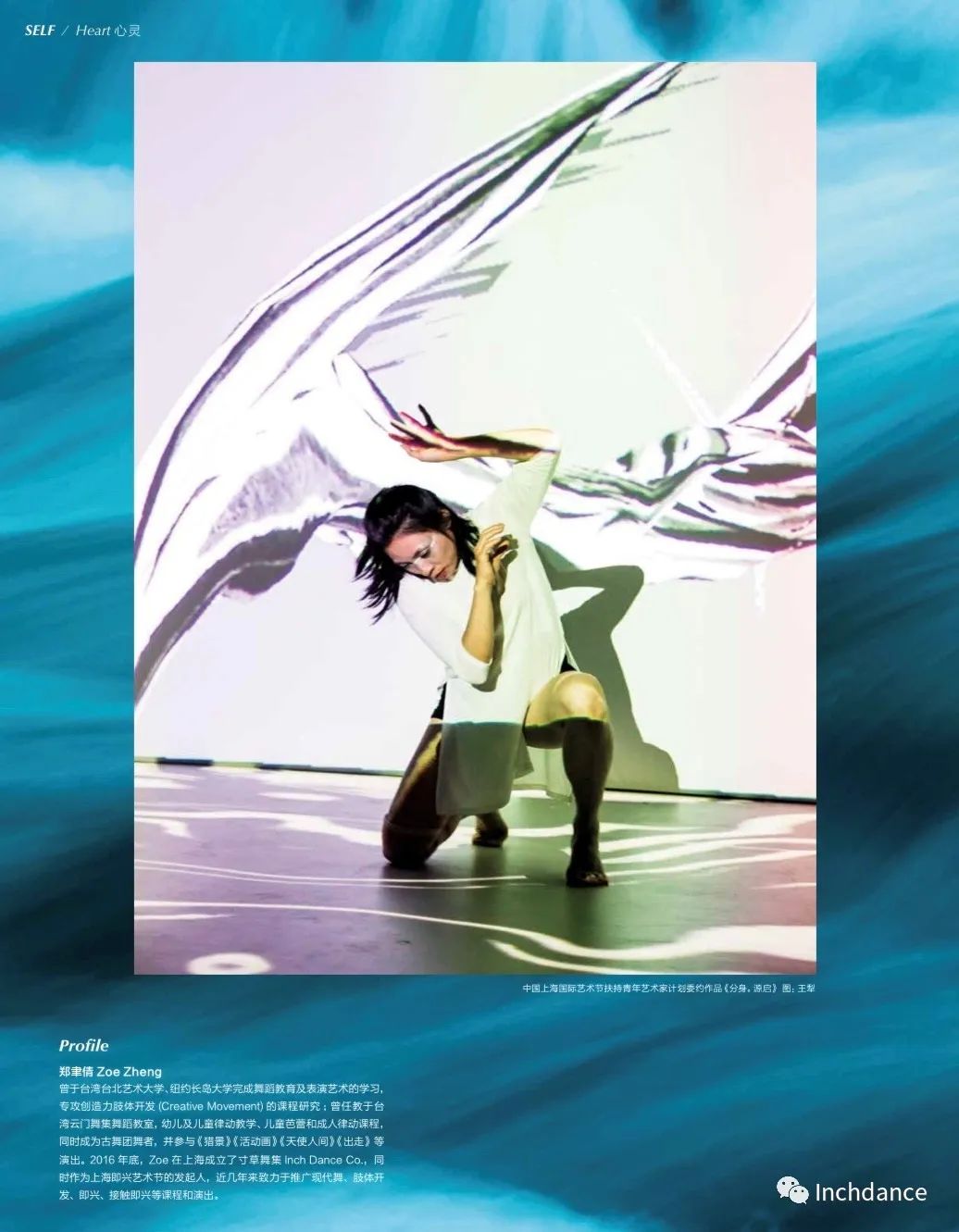
From Today, Care for the Body
The body can actually speak. If people pay attention to it, they can perceive those undiscovered, deep self-directed messages. However, due to people's social nature, we are accustomed to seeking externally and often find it difficult to return to ourselves.
"Living in a collective, we received the most education in childhood to be obedient and follow rules. Our own feelings were not that important, and we were not used to 'listening' to ourselves," Zoe said. But in a chance improvisation class in college, she got to know 'contact improvisation.'
As a part of postmodern dance, 'contact improvisation' was initiated by American choreographer Steve Paxton in New York. This way of expression, which does not stick to the beauty or ugliness, right or wrong of movements, allows dancers to express freely. Although it was considered 'rebellious' by the art circle, which advocated details and aesthetics at the time, it fascinated Zoe, who was still in college. 'As a dancer, you care about your body's proportions and flexibility, but this dance allows you to perceive more possibilities of the body.'
After graduation, Zoe became a dancer in the Ku Dance Company founded by dancer Ku Ming-Shen. Under the guidance of this person known as the 'mother of contact improvisation in Asia,' she learned the structure of 'contact improvisation' and gained a more complete self-awareness.Before 'improvisation,' dancers need to complete awareness exercises: adjusting breathing, walking slowly... feeling which parts often bear force, or whether they are sore or stiff. This is not just about simple physical movements but learning to use the five senses to awaken the body. She believes this process is also like introspection. 'You start to think about whether you are too concerned about external voices and how to turn this attention to yourself.'
When she brought this feeling into dance, her body suddenly felt 'opened.' Zoe described the feeling as 'like a spring slowly flowing through every corner of the body.'
'I believe our bodies inherently have this 'fluidity.' If you observe, you will find many similar 'voices.''
This somewhat aligns with the oriental colors filled in 'contact improvisation': Japanese Aikido, Eastern Zen, Tai Chi Push Hands... Later generations also linked it with Somatics. It seems that whether the body and mind are integrated is more important in 'contact improvisation' than the dance itself. People do not gain from breaking conventional performances but from understanding and perceiving, thereby finding suitable bodily expressions.
However, this way of examining and perceiving the body somewhat benefits from the partner you 'contact' with. The body needs to be keen and responsive to the present. 'This process is not just about 'self-awareness.' Because essentially, 'contact improvisation' is still a dance that requires the 'interaction' of two or more people.' Without 'contact,' these observations about oneself and others cannot be discussed. Zoe added: 'So we can't just talk about 'improvisation.''
Contact Improvisation (Contact Improvisation), is 'based on the
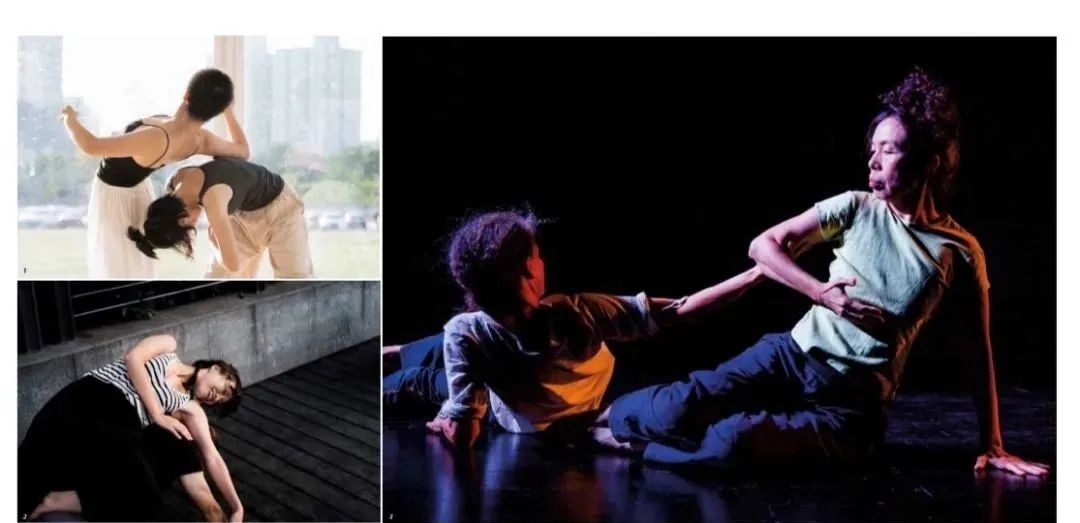
1/ At the Xuhui Riverside Camp in Shanghai, during the workshop of the 2nd Shanghai Improvisation Festival, two 'improvisers' engage in a silent conversation through body contact and collision. (Photo: Wang Li) 2/ Seed students of InchDance perform an improvisational dance under the Waibaidu Bridge in Shanghai. Different times, places, regardless of age and profession, nature is the best stage. (Photo: Felipe Dos Anjos) 3/ At the 3rd Shanghai Improvisation Festival, well-known Taiwanese dancer Ku Ming-Shen and several artists bring an improvisational performance called 'The Great Adventure' to the audience. (Photo: Wang Li)
Contact, A Silent 'Flow'
If 'contact improvisation' has no standard movements, then what improvisers need to do is to form improvisational motives through 'contact,' interact by perceiving each other's body states, and thereby achieve their dance. In fact, there is a certain distance between people, or a stereotype, that contact only occurs during emotional exchanges.
'But real communication must occur between two equal and natural bodies.' This is the most important aspect of 'contact improvisation.' People must discard distractions and forget gender. As Zoe said,The essence of contact is not purposeful collision but listening to and following the other person's body, 'imagine yourself as a river, feeling the 'water' flowing within you.'
For example, when you imagine yourself as water, you are both a stream and a waterfall; when you use these imaginations in the process of contacting another body, you are actually meeting another river. 'Your limbs are soft and relaxed. When you feel these 'intersections,' you will feel a warm current.' The body will naturally produce different movements to express this feeling. 'From then on, you start to forget gender.'
On the other hand, this kind of communication achieved through bodily 'flow' also tests a person's authenticity. 'You need to gradually shed some inner or outer layers. If you arm yourself, it is difficult for anyone to get close to you.' Zoe added, 'This process tests not only insight but also whether the dancer has the courage to break free from distracting thoughts, overcome psychological barriers, and achieve breakthroughs or self-consistency.'
'This tension is very strong.' Some people will collapse directly, wail, or scream. 'Some people persisted after experiencing it, while others quietly left the scene.'
Until now, Zoe also finds it difficult to understand the reasons for these losses of control. 'Some feelings, you can ignore them, but you can't deny them. But at least, this space at that moment enveloped the part of 'self' they 'separated' out, or maybe it’s because dancers share a certain tenacious, independent yet interdependent relationship so that some believe that certain mediums within this space have changed.' People often regard 'Contact Improvisation' as a form of dance therapy equated with psychological healing. For instance, some psychotherapists use some 'Contact Improvisation' awareness exercises to help individuals vent emotions or repair relationships between two or more people.
But in reality, the struggles and escapes exhibited by 'Contact Improvisation,' in the eyes of dancer Zoe, are more inclined to be a necessary process in contact. Because the body's memory also has reefs, some things have been blocked there for a long time. When people want to develop more possibilities or achieve more 'intimate' flow with others, they need a 'clearing' process. 'Maybe this is also the 'healing' power in most people's eyes.' Zoe said.
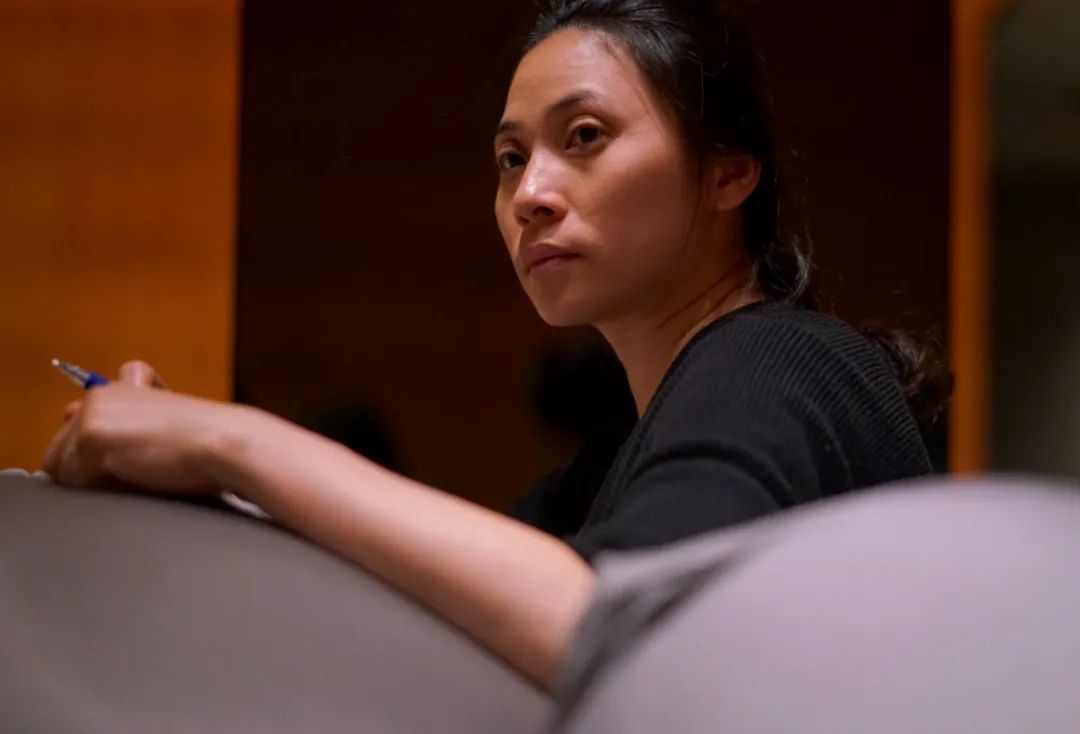
Everyone Can Dance
Three years ago, because 'the body wanted to find someone to dance with,' Zoe searched for a compatible group in Shanghai but to no avail. So she started organizing activities herself. After meeting a group of 'improvisation' and 'Contact Improvisation' enthusiasts, she foundedInchDanceand began organizing the Shanghai Improvisation Arts Festival.
'Improvisation' training has given Zoe more different ideas in performance, creation, and teaching. Currently, she focuses on teaching Creative Movement for children. Because for children, using their bodies to touch and mobilize the five senses to feel people and the environment is actually quite common. She wants to protect that kind of 'perception.' 'As we grow older, the limitations society imposes on our bodies increase, and our sensory abilities gradually become dull,' Zoe said.
But in 'Contact Improvisation,' everyone can dance, and everyone can find different things. The feelings that dance brings to people will also be different. 'People get to know each other through their bodies rather than language. This kind of more real communication compared to the current internet and virtual world can also create deeper and more interesting connections between people.'
Nowadays, 'Contact Improvisation' is also taking root in different cities. Beijing's 'Contact Improvisation' BJCI brings the Touch Contact Improvisation Festival to China, touring and teaching in major cities every year. In Hangzhou, Chengdu, Guangzhou, and other places, these deeper levels of communication are 'voicing out.' Perhaps this kind of communication, which originates from the body but returns to the human, is a dance of spiritual healing, and its positivity further promotes individual self-consistency and outreach to the external world.
'For us ordinary people, it's a new perception. 'Improvisation' performances do not have 'worldly' uses, but for most people who are performing or have participated in it, it flows with vitality, which may also be related to human genuineness.'
As the founder of 'Contact Improvisation,' Steve Paxton, said, the core of 'Contact Improvisation' is not only about understanding oneself, not demanding oneself to do everything right, but more about listening to the feelings of the body and mind, and 'treating others as oneself.' Only by seeing oneself first can one learn to accept others.
In the end, this is the true meaning of 'Everyone Can Dance' for ordinary people.
Point
Create time and space to observe how gravity affects our organs, muscles, and bones.
Flow
Find direction, change the steady state; move, and the dance of life is born in this exchange of forces.
Structure
Without a stable riverbed, a dynamic river cannot flow; similarly, our body elements need a solid structure for movement.
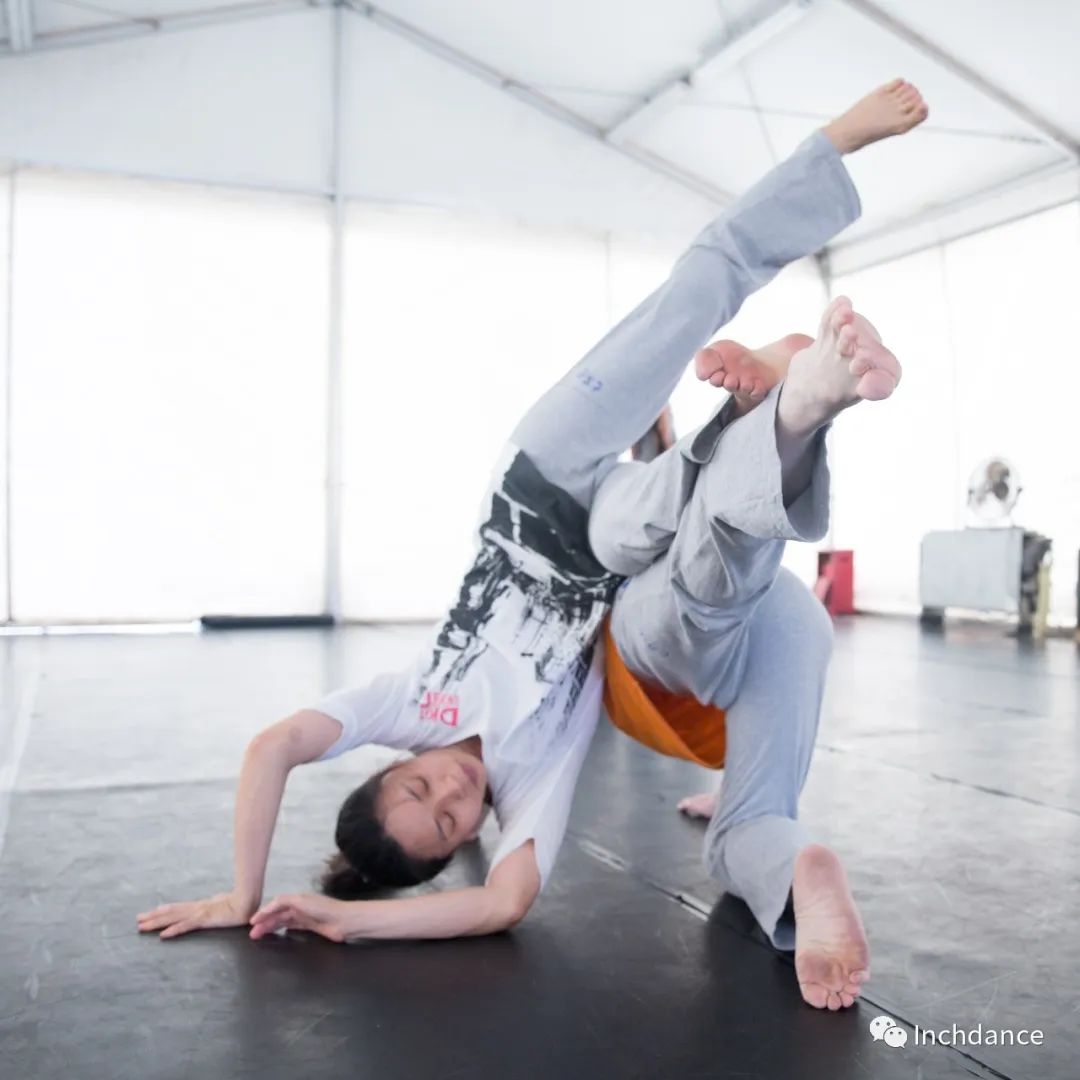
The First Shanghai Improvisation Arts Festival (Photo: Wang Li)
1
10
伏
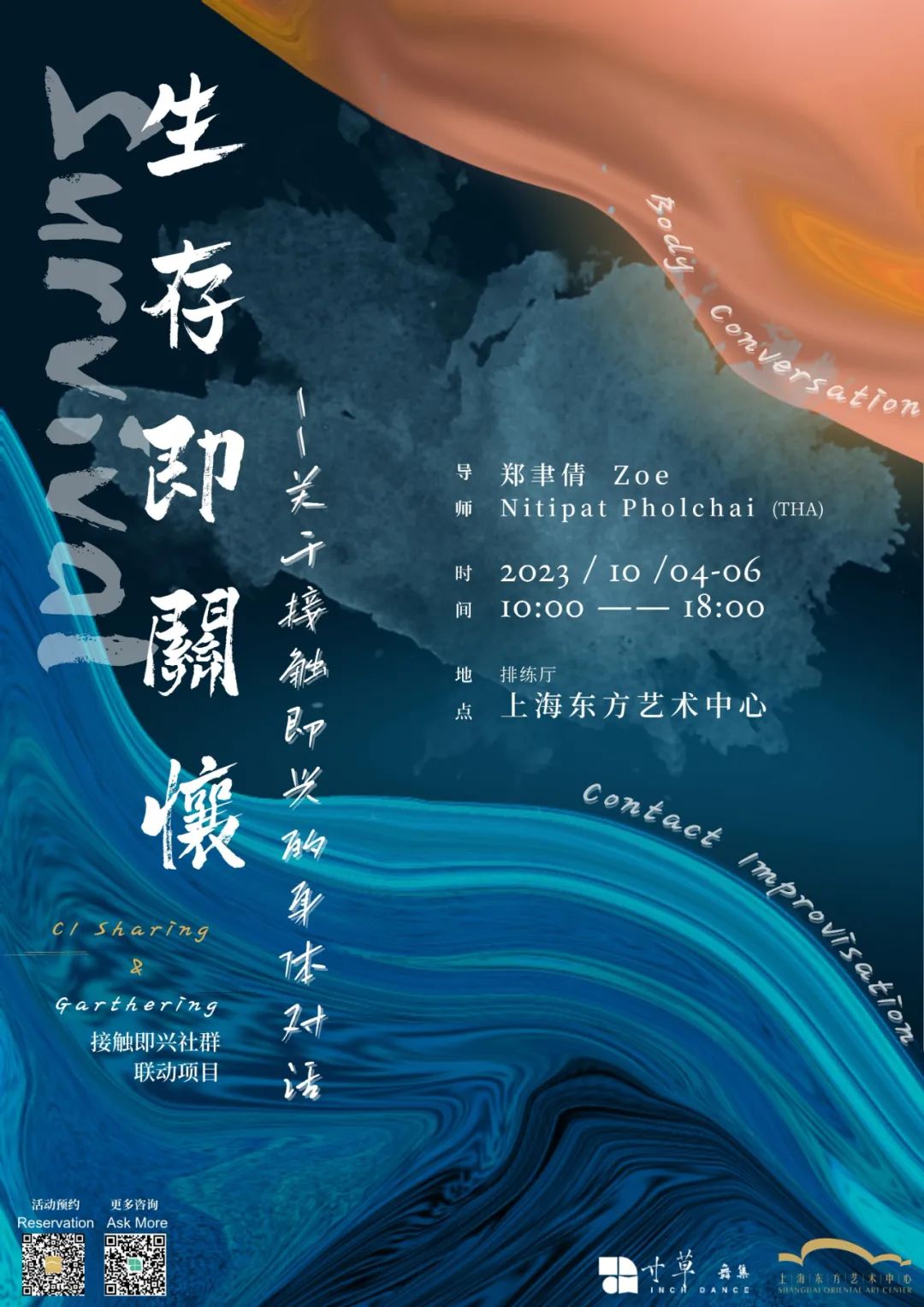
Workshop Schedule
October 4-6 Shanghai Oriental Art Center
10:00-13:00 Workshop
13:00-14:30 Lunch Break
14:30-17:30 Workshop
October 4 Heim
20:00 - 22:00 Public Lecture and Performance by Instructors
*All workshop participants can join for free
October 6 Shanghai Oriental Art Center
19:00 - 20:00 Instructor and Participant Showcase
20:00 - 22:00 Jam
*All workshop participants can join for free
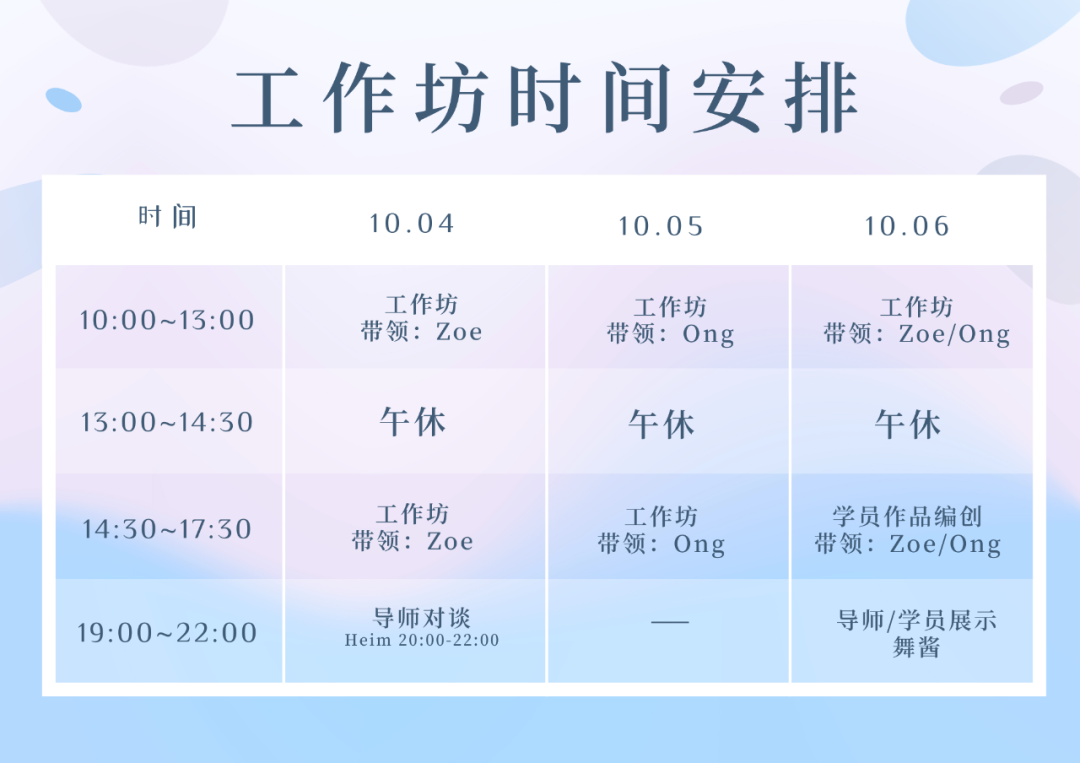
Event Fees
October 4-6 Three-day Workshop
Full Price 3680 RMB/person
Early Bird Price 2780 RMB/person (register before September 25)
*Lunch provided for all participants during the workshop
October 6 19:00-22:00 Jam and Showcase99 RMB/person
This Event Special Scholarship 2 People, 1980 RMB/person, for dancers who need financial support and have long-term practice in CI, must ensure full participation in the workshop. Interested applicants please contact "SHCI assistant" and submit your personal information and application reasons. The partners who have obtained the quota will be notified at the end of September.
all participants who sign up for the three-day workshop can participate in the lecture on the evening of the 4th and the showcase and dance jam on the evening of the 6th for free. The first 20 registrants will receive a free InchDance T-shirt.


更多详情: 10月4-6日 「生存即关怀——关于接触即兴的身体对话」上海国际导师工作坊
Ong访谈片段 : 我们需要什么样的接触即兴?

Hope to shorten the distance between people through dance and discover the beauty of the body. Committed to creating, performing, and promoting courses such as modern dance, improvisation, and Contact Improvisation.